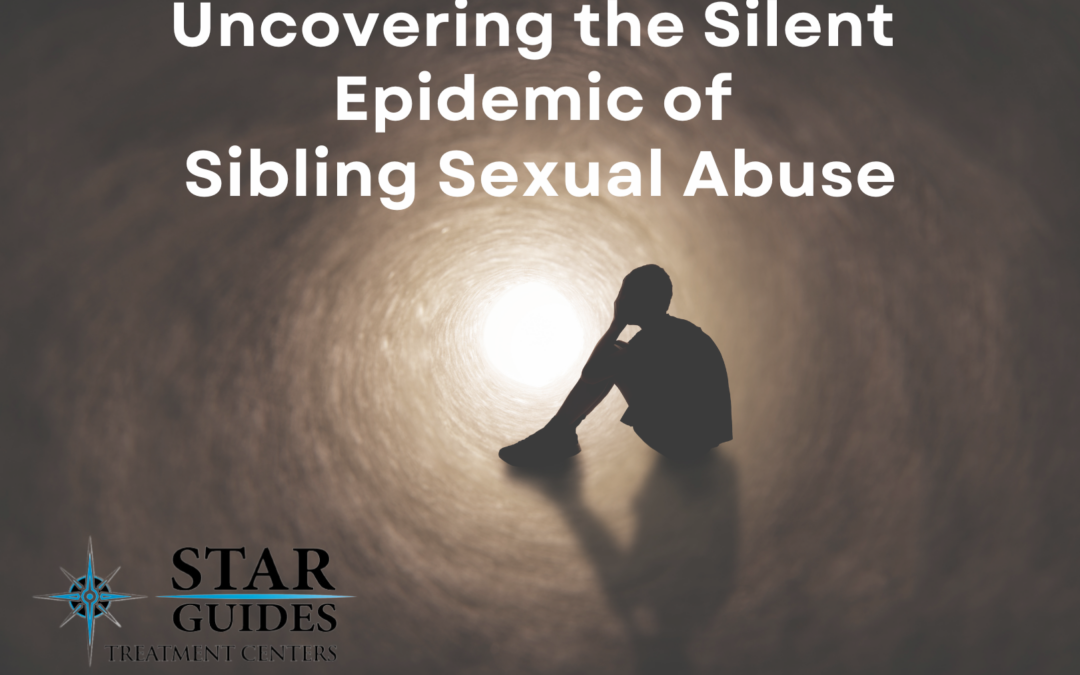Sibling sexual abuse is far more common than many parents realize, often hiding in plain sight. It is believed to be among the most frequent forms of child sexual abuse within families, yet it remains a topic that is frequently overlooked. This lack of awareness makes it all the more crucial for parents to educate themselves, recognize the signs, and take proactive measures to protect their children.
This blog aims to shed light on sibling sexual abuse, its impacts, and what parents can do to prevent and address this serious issue, fostering a safer family environment.
Understanding Sibling Sexual Abuse
What Is Sibling Sexual Abuse?
Sibling sexual abuse encompasses any inappropriate sexual behavior between siblings that is not motivated by innocent curiosity. This includes forced activities, coercion, and the exploitation of power dynamics within the sibling relationship. Such abuse can occur between biological siblings, as well as step, half, adopted, or foster siblings, indicating that the issue can affect any family dynamic. Understanding the nuances and complexities of these relationships is vital for recognizing and addressing potential abuse.
Common Myths and Misconceptions
One major misconception is that sibling sexual abuse is merely an innocent childhood exploration. In reality, it constitutes a harmful form of control that can have long-lasting and devastating consequences for victims. Another myth is that such abuse is rare; however, statistics suggest it is more prevalent than parental abuse. Thus, highlighting the need for increased awareness and dialogue around this topic.
Impacts and Warning Signs
Long-Term Effects on Victims
Victims of sibling sexual abuse often endure a range of psychological issues, including depression, anxiety, post-traumatic stress disorder (PTSD), and difficulties in forming healthy relationships. The trauma associated with these experiences can extend into adulthood, greatly affecting their mental health, emotional well-being, and ability to trust others. Understanding these potential outcomes is crucial for parents seeking to support their children.
Behavioral and Emotional Indicators
Parents should be vigilant for signs that may indicate something is amiss, such as sudden changes in behavior, social withdrawal, aggression, nightmares, or an unusual reluctance to be around a particular sibling. These behavioral and emotional indicators can serve as vital clues that help parents identify whether something inappropriate may be happening between their children.
Prevention and Response Strategies
Factors Increasing the Risk of Abuse
Several factors can elevate the risk of sibling sexual abuse, including a lack of supervision, unclear boundaries, and prior experiences of abuse within the family. Understanding these risk factors can empower parents to take preventive measures that create a safer home environment for their children.
Steps Parents Can Take
- Educate Yourself and Your Children: It is essential to teach children about personal boundaries, consent, and appropriate behavior. This includes discussions about what constitutes respectful interactions and helping them understand their rights in any relationship. By fostering their ability to recognize and communicate discomfort, children will be better equipped to stand up for themselves and seek help if needed. Utilize age-appropriate resources, such as books and workshops, to reinforce these concepts regularly.
- Supervise Interactions: Keeping a close eye on how siblings interact is crucial, especially if there is a significant age gap, as this can lead to misunderstandings or inappropriate behavior. Actively participating in their play and discussions can provide insights into their dynamics and help you guide them towards positive interactions. Establishing rules about playtime and ensuring they are followed can also minimize risks and encourage healthier relationships.
- Create an Open Environment: Encouraging open communication within the family is vital to fostering a safe space. This means allowing children to express their thoughts and feelings and actively listening to them without interruption or judgment. By making it clear that discussing concerns, worries, or experiences is welcomed and valued, children will feel more comfortable reaching out about any issues they may encounter. Regular family meetings or check-ins can help reinforce this openness and build trust among family members.
Support and Resources
Organizations and Helplines
Numerous organizations, such as Stop It Now and NSPCC, offer valuable support and resources for families dealing with sibling sexual abuse. These organizations provide confidential helplines, professional counseling, and educational materials to empower parents and caregivers in their efforts to combat this issue.
Seeking Professional Help
Family therapy can be an invaluable resource in navigating the complexities surrounding sibling sexual abuse. A sensitive and experienced therapist can assist families in processing their experiences, fostering healthy communication, and finding the best balance for everyone’s emotional and psychological well-being.
Conclusion
Sibling sexual abuse is a hidden epidemic with severe and often long-lasting consequences. Parents must educate themselves, remain vigilant, and take proactive steps to protect their children. If you suspect that your child may be a victim, seeking professional help immediately is crucial. By taking these actions, you can help ensure the safety and well-being of all your children.
For additional support, consider reaching out to starguides.net who can help you refine your approach to family safety and child protection. Your family’s well-being is our top priority, and together, we can create a safer environment for your children.
Take Action
We encourage you to Book Your Free Consultation Now by clicking here, or you can call 1 (800) 584-4629. Our team is ready to provide you with the support and guidance to navigate these challenging situations. Don’t hesitate to reach out—your family’s safety is our utmost priority.

